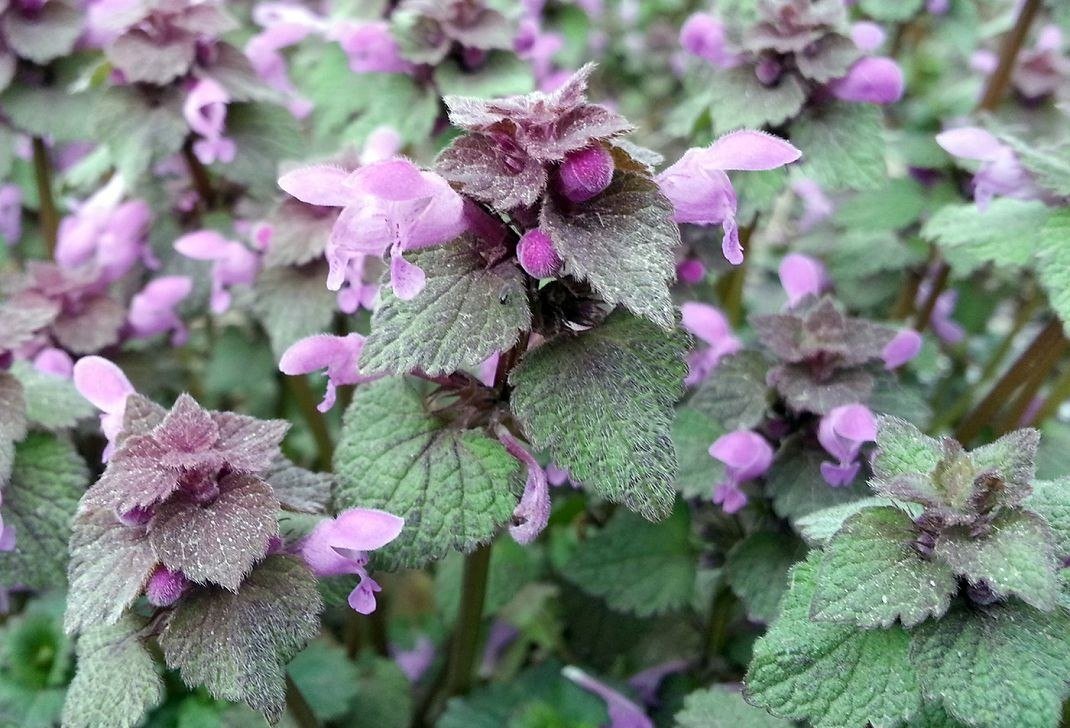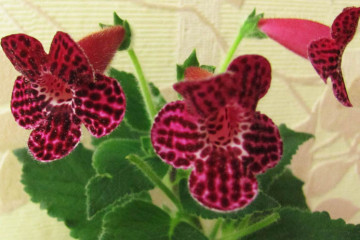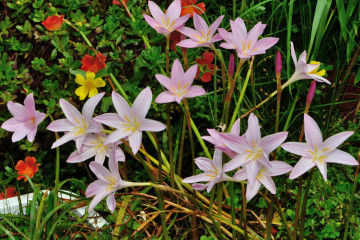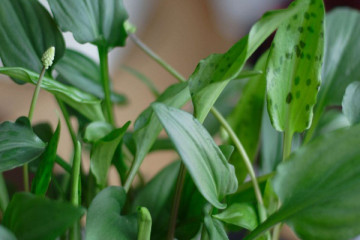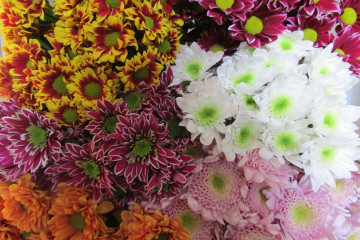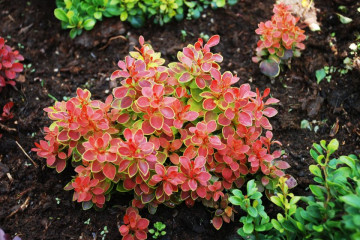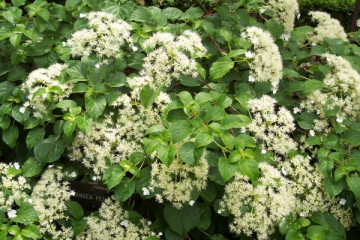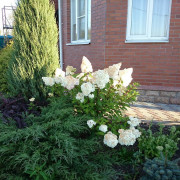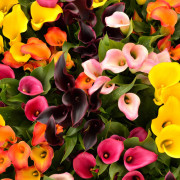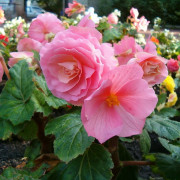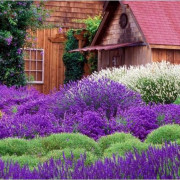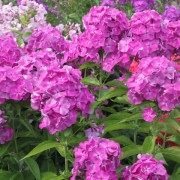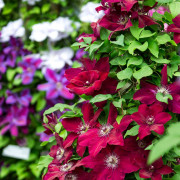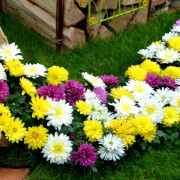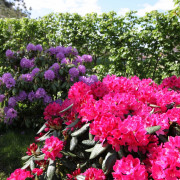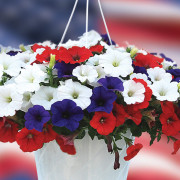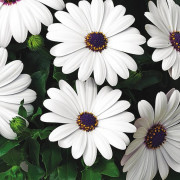Plant lamb - types of flower, planting and care
Content:
In the forests, you can see grass of bright green color with white flowers. Her leaves look like nettles. This plant is a deaf nettle, in Latin "Lamium", another name for the lamb. Lamb is a ground cover plant. More often it is a perennial, less often annual species are found.
What does the plant look like?
The grass belongs to the Lamb family. There are over 3500 varieties in it. There are about 30 species. They are distinguished by the colors of the buds and the shape of the leaves. A distinctive feature of these plants from other representatives of the flora in two-lipped flowers. Below are five petals, they are completely spliced. From above, the petals grow together in parts.
The stem has four edges. Several leaves grow on it. The roots are creeping. Stems reach a height of 15-45 cm. Flowers bloom from May to September.
Healing properties
Lamb is not included in the pharmacopoeia of the Russian Federation. Nevertheless, its properties are subject to active research. It has been scientifically proven that remedies based on lamina are used as hemostatic, anti-inflammatory and antihypertensive.
Tannins are included in the clear. They have astringent properties, which helps the skin to clear various inflammations: urticaria, eczema, etc. Also, mucus is present in the cells of the plant. This is a wonderful substance as an expectorant. The presence of flavonoids helps to strengthen the capillary walls and lower blood pressure.
No harmful substances were found. It is forbidden to use drugs with it if there is increased blood clotting and chronic hypotension. An absolute contraindication to taking this plant during pregnancy, as it increases the likelihood of miscarriage.
Brief history of appearance
The homeland of the lamb is Europe, Asia and North Africa. Many species grow around the world as weeds that plague agriculture. However, some species are used as ornamental plants.
The name "Lamium" was invented by the philosopher Pliny. He made several assumptions about the origin of this name:
- from Greek "Laimos" is translated as "mouth-throat";
- another version of the translation is "large cavity";
- Lamia is the name of the Libyan queen. She is listed in history as a monster that ate her own children. The lamb also swallows a bumblebee or a bee that sat on a flower for nectar.
Despite the similarity with nettle, it does not burn, it has soft stems. However, the plant has a very heavy and foul odor. Perhaps this is due to the fact that to drive away animals from themselves. Livestock also do not eat this herb. In addition, it resembles a nettle. The plant is widespread in forests, meadows, in shady areas, near fences.
Description of varieties
Varieties can be annual, biennial, and perennial. The species differ in flower colors and leaf sizes.
There are the following types of cleaver:
Purple lamb
Lamb purple, or lucid pink, lucid purple. The petals have a shade of pink or white. Flowers are sessile. It grows for 1-2 years. Bloom from April to September. The leaves are rounded on the bottom on long stems, and on the top they are heart-shaped on short stalks.It is possible to propagate the lamina in the open field by dividing the bush.
Spotted lamb
In another way, it is called speckled. Latin name "Lamium Maculatum". The flowers are light pink or purple in color. Their length is 2-3 cm. It blooms from May to October. It can grow in height up to 70 cm. The leaves are small oval and dark green in color. You can propagate by dividing the bush, layering or cuttings.
The flower is perennial. Several varieties of the spotted species have been bred:
- grade Bekon Silver. Silver has purple or ash flowers and silvery leaves. For this, the variety is also called silvery clear;
- another popular variety is Golden Anniversary. Gold Anniversari grows up to 0.2 m in length. The leaves are bright green with a stripe of silvery;
- also known variety White Nancy (Nancy). White Nancy has silvery leaves and white flowers;
- variety Purple Dragon. Dragon has pinkish-purple petals.
Yellow lamb, or zelenchuk
Latin names - "Yellow", "Luteum". Flowers are yellow, collected in whorls. Above, the leaves have a pointed egg shape, and three-lobed below. Blooms from May to October. Zelenchukovy flower is a perennial plant. The plant can be propagated by dividing the bush, cuttings or layering.
There is a variety of this type of Pride. The Pride variety is used for decorative purposes.
Variegated lamb
Perennial. Flowers with yellow petals, green leaves with yellow-green spots. Reproduction can be carried out by dividing the bush, cuttings or layering.
Felt lamb
Perennial species. The leaves are wrinkled and egg-shaped. There are notches along the edge of the foliage. The flowers are pinkish-white. You can reproduce in the above ways.
The lamb can be a decoration for large flower beds. It can be combined in mixed compositions with ferns or bulbs. Some varieties can be used in early spring, when other flowers have not yet blossomed in the garden. With the help of this perennial, you can revive the farthest corners of the garden, the ground near bushes and curbs. The plant also grows well near stones, that is, it fits perfectly into an alpine slide or rocky garden. You can plant a flower next to daffodils, hyacinths, dwarf tulips. It can also be grown in containers and large vases as part of a composition.
General rules for outdoor care
The flower grows very quickly. It is often mistaken for a weed. It is necessary to follow the rules of planting and caring for spotted ash and other species so that the plant decorates the landscape design.
Watering and humidity
This plant needs to be watered regularly and abundantly. However, water should not be allowed to stagnate in the roots. When it's hot outside, the leaves begin to dry out and curl. Exposure of shoots is also possible.
Soil selection
To grow the flower in question, the soil must be loose and moist. The soil should contain a moderate amount of nutrients. If an excessive amount of nutrients is present in the soil, then the plant will begin to grow rapidly, which will interfere with the growth of other specimens.
Location selection and lighting
This flower is unpretentious in care and cultivation. It can be planted in any area with partial shade. Ideal for shrubs along a wall or fence.
Fertilizers and feeding
At the beginning of growth, the flower is necessarily fed with liquid types of fertilizers. You can use mullein or mineral supplements.
Diseases and pests
The plant in question kills all weeds within its growth space. When there is a lot of rain in the summer or moisture remains on the leaves for a long time, then a fungal disease may appear on it. If the summer is dry, then this can lead to the fact that the flower is attacked by whiteflies and scale insects. Spider mites are no less dangerous. If signs of disease or traces of parasites are found, then the plant must be immediately treated with insecticides and folk remedies.
Lamb grows well in forests, but it is used as a decoration for a garden plot. It is unpretentious in care, but it is worth controlling its growth so that other plants do not suffer from its strong growth.

